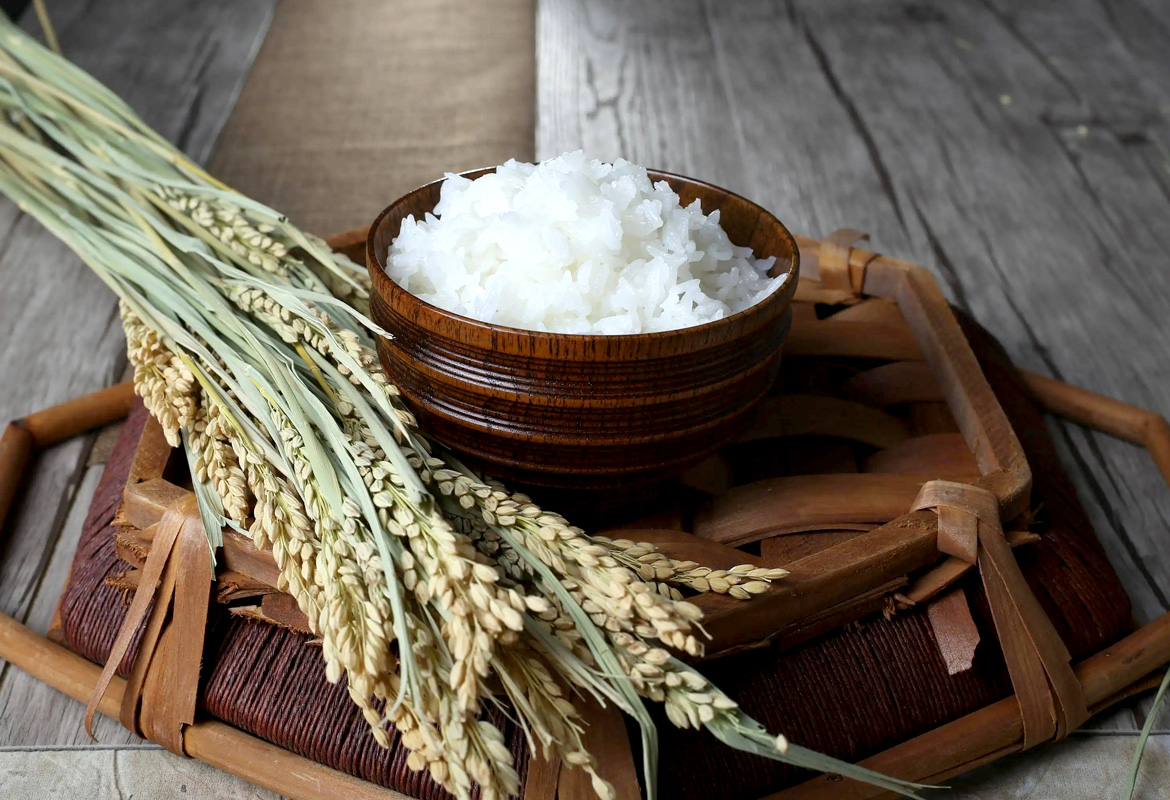Rice mainly refers to early indica rice (machine-made rice), late indica rice, early japonica rice, late japonica rice, glutinous rice, etc.
Good rice is full, clean, shiny, with shallow longitudinal grooves. The section of broken rice is translucent white. It smells fresh. After steaming, the rice grains are shiny, chewy and fragrant.
Poor quality rice. The rice grains are not full, thin, with deep longitudinal grooves and no luster. The broken rice grain section remains brown or gray white. The moldy rice grains are mostly green, yellow, grayish brown and auburn, with poor luster, loose tissue, musty smell or other peculiar smell. It tastes light, coarse and has low viscosity. This is also the characteristic of Chen rice.
Glutinous rice, medium indica glutinous rice is long oval, and japonica glutinous rice is oval, both are milky white and opaque. When cooking, the water absorption and swelling are small, the viscosity is strong, and the product is full of luster. Generally, adulterated glutinous rice mixed with other rice can be soaked in iodine for a moment, and then washed with water. The glutinous rice is purple red, while the indica or japonica rice is blue.
Millet, generally millet is bright natural yellow, glossy and mellow, and will not be stained yellow when gently pinched. If millet has been dyed with pigments such as turmeric or floor yellow, it will be dyed yellow on the hand when gently pinched, or put a small amount of millet into a cup and add a small amount of water. Shake it and let it stand. If the water turns yellow, it indicates that the millet has been dyed.

(1) Hardness: The hardness of rice grains is mainly determined by the content of protein. The stronger the hardness of rice, the higher the protein content. The transparency is also higher. Generally, the new rice is harder than the old rice, the rice with low water content is harder than the rice with high water content, and the late rice is harder than the early rice.
(2) Look at the belly white: There is often an opaque white spot on the belly of rice. The white spot is called "heart white" in the center of the rice grain, and "outer white" in the outer belly. The protein content of rice in the belly white part is low, and the starch content is high. - Generally, the rice with too high moisture content, which has not been ripened after harvest and is not mature enough, has a large belly white.
(3) Look at the bursting waist: the bursting waist is caused by the rapid heat during the drying process of rice. After the rapid heat phenomenon, the internal and external shrinkage of rice grains is out of balance. When eaten, the fried kidney rice is rotten outside and raw inside, reducing its nutritional value. Therefore, when selecting rice, carefully observe the surface of the rice grain. If one or more transverse cracks appear on the rice grain, it means that the rice is burst.
(4) Look at the yellow grains: the yellowing of rice grains is caused by the chemical reaction of some nutrients in rice under certain conditions, or by microorganisms in rice grains. These yellow grains have poor flavor and taste, so you should observe how much yellow grains are when you choose. In addition, rice grains contain more "dead green" grains, and the quality of rice is also poor.
(5) Look at the new rice: the aging of rice is serious, the color of the old rice becomes dark, the viscosity is reduced, and the original flavor of rice is lost. Therefore, we should carefully observe the color of rice grains. The rice with gray powder or white grooves on the surface is old rice. The more it is, the older it is. At the same time, pick up the rice and smell if the smell is normal. If there is a musty smell, it means it is old rice. In addition, check whether there are worm eaten grains in the rice grains. If there are worm eaten grains and worm corpses, it means that the rice grains are old. In addition, check whether there is insect erosion in the rice grains. If there are insect erosion grains and insect carcasses, it indicates that the rice is aged. To identify the rice mildew, it is mainly from the aspects of rice color and smell.


